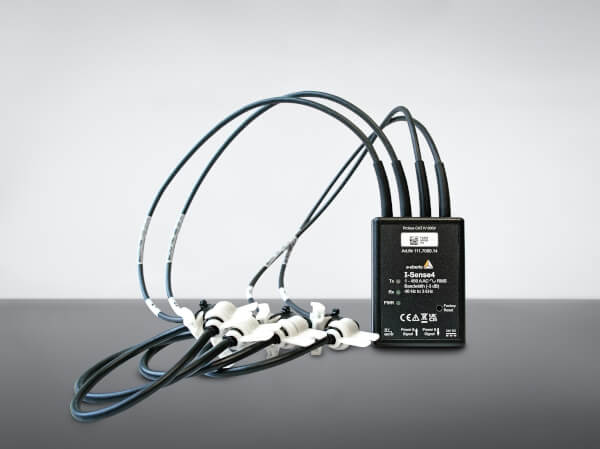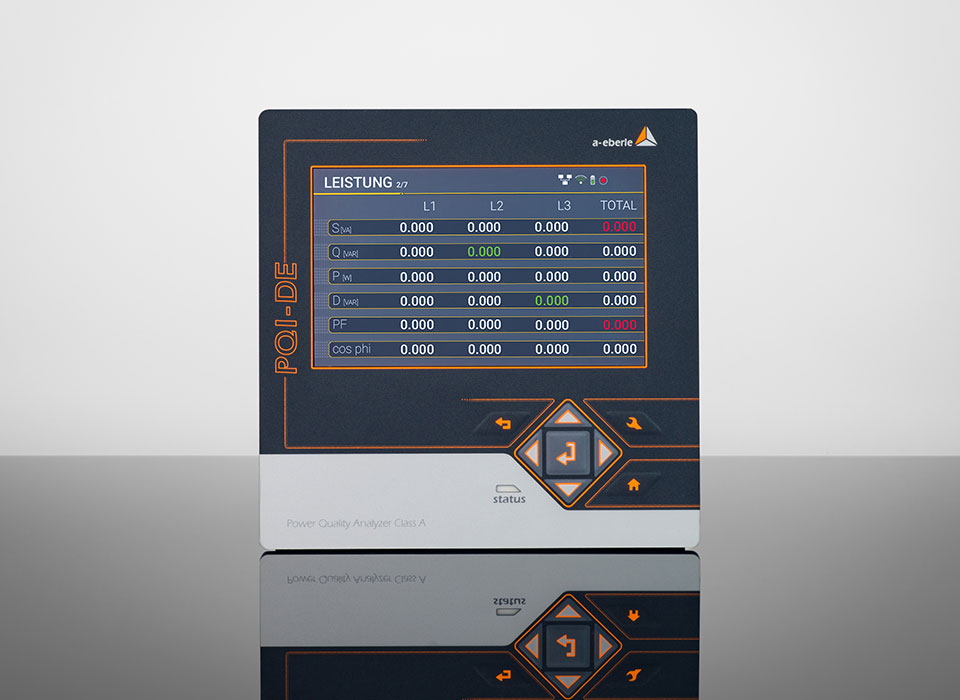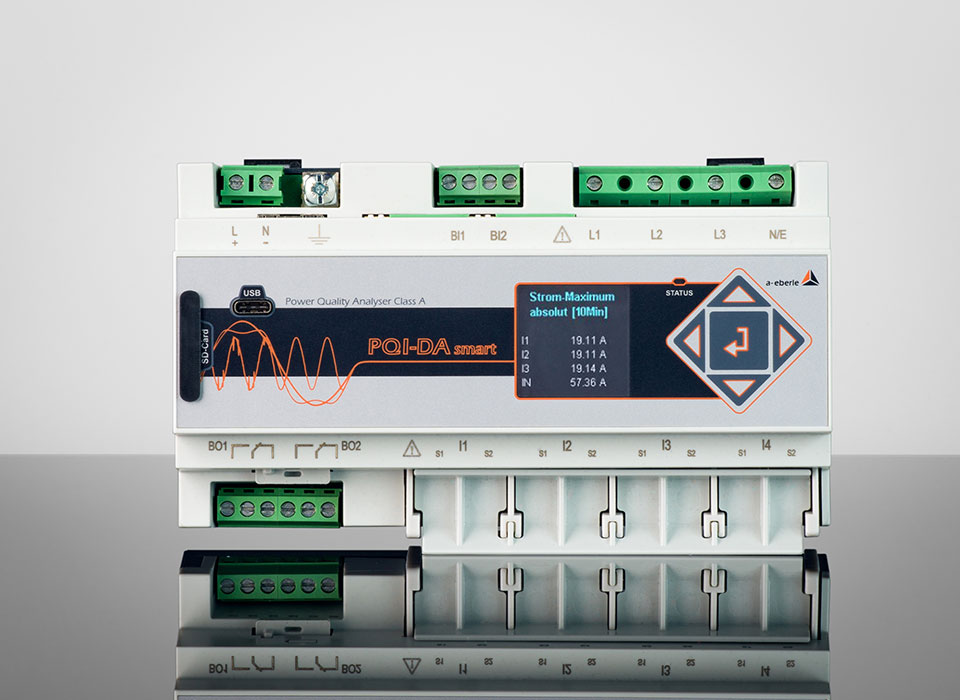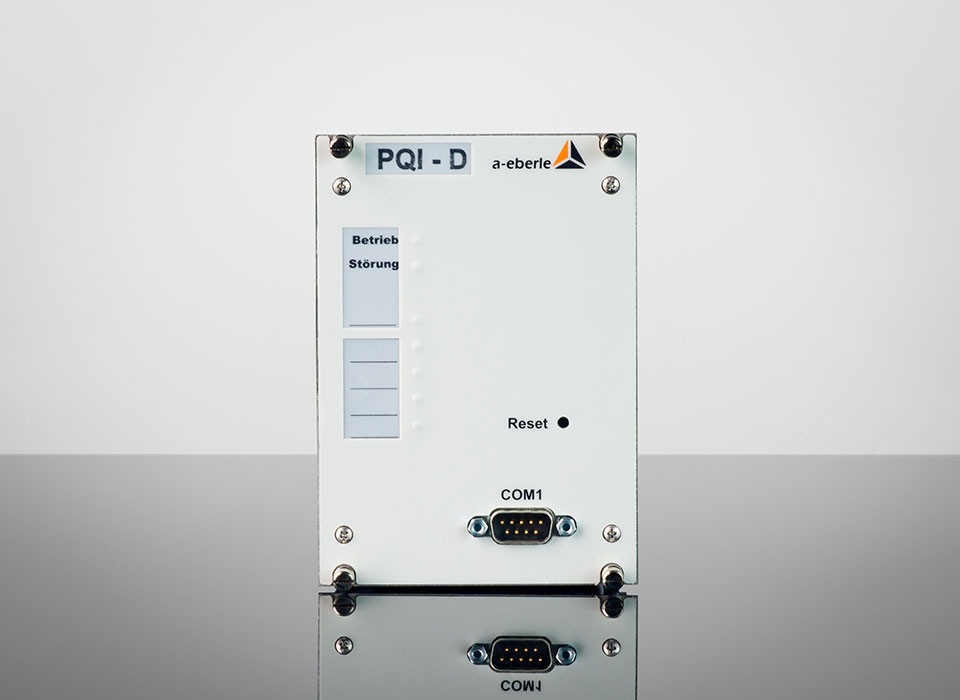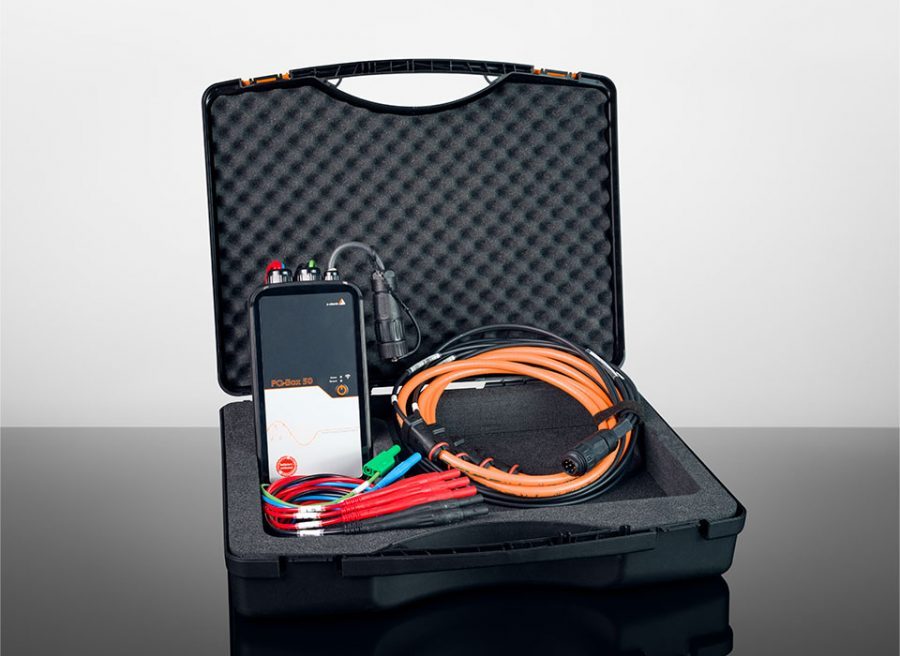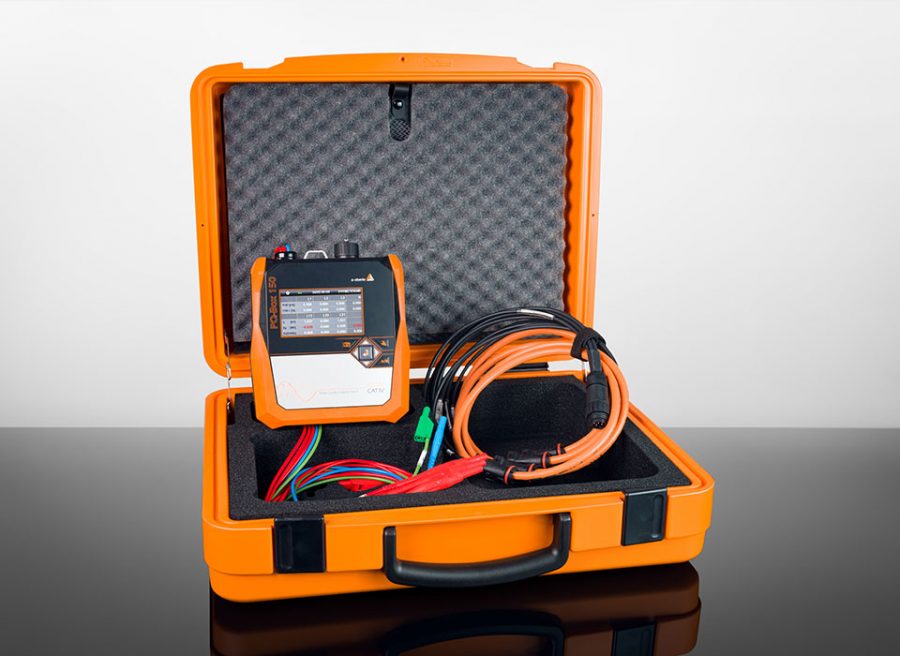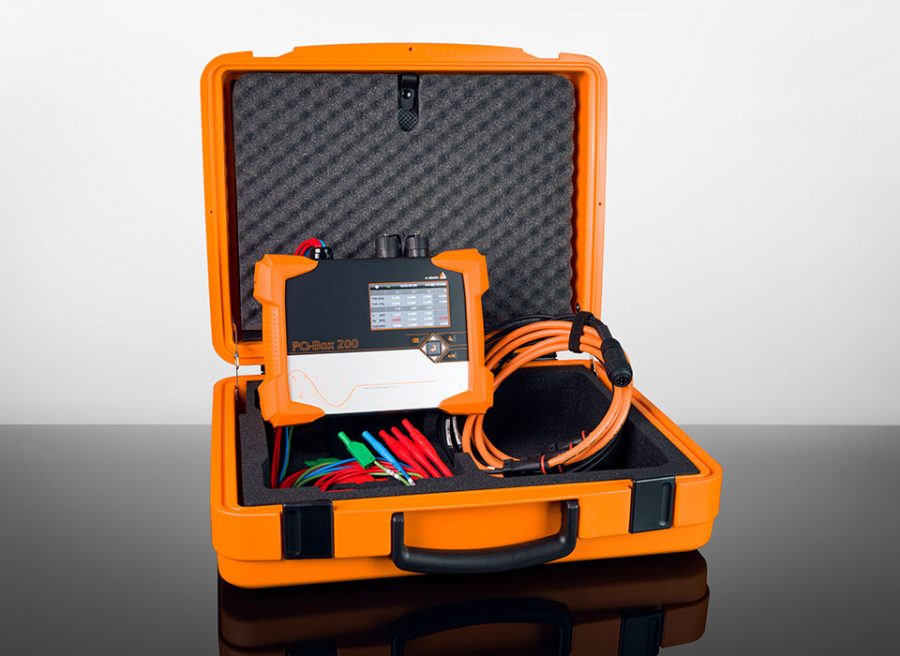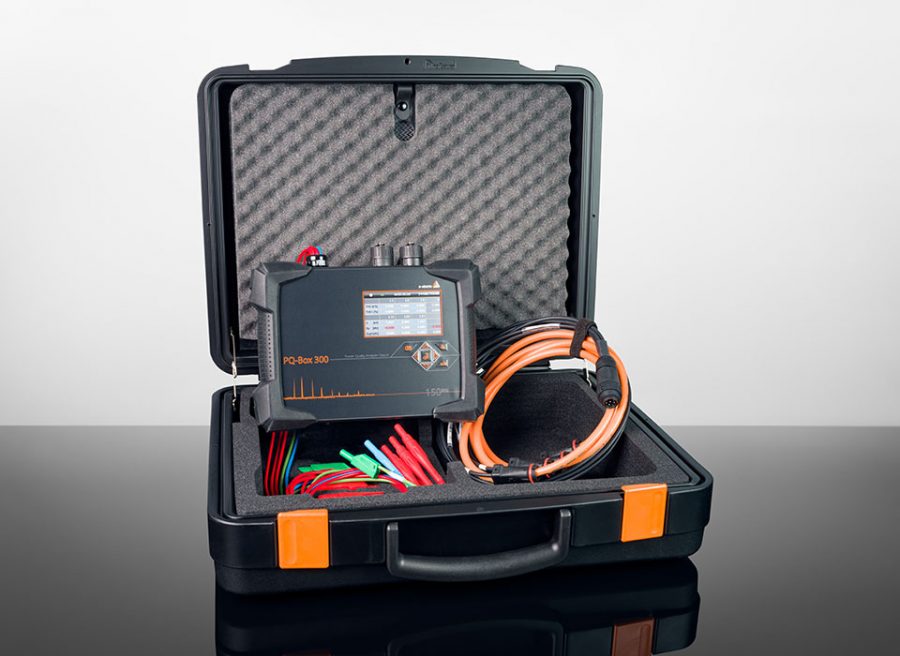Residual current measurement & residual current monitoring
Mains quality always in view
What is fault current or residual current measurement?
The vectorial sum of the individual currents of the phases (incl. N conductor) is measured via a residual current transformer. In the ideal insulation state, the vectorial sum should be zero. If a fault occurs in the consumer or in the supply lines, the fault current flows off via PE and the sum of the currents (differential current) is not equal to zero.
The measurement technology behind it (e.g. PQI-DE with feature D1) measures, detects and reports this error even with very small deviations. This ensures that a fault is detected at a very early stage and can be rectified before the system comes to a complete shutdown.
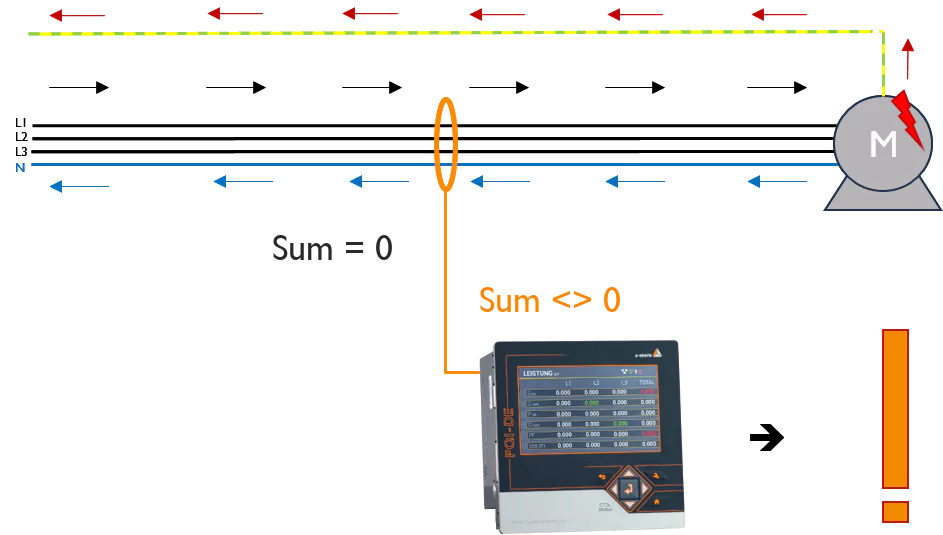
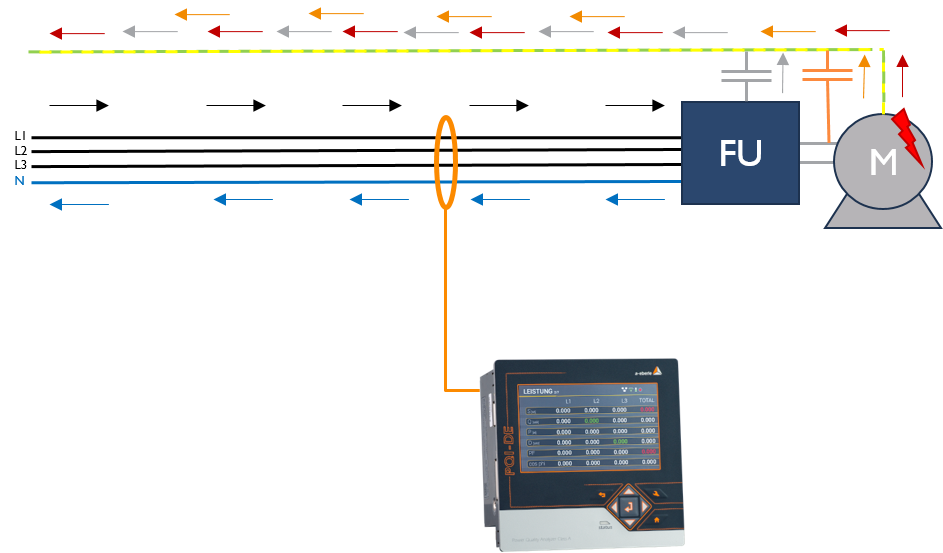
How does fault current occur?
If a deviation is detected with the residual current measurement, there may be various causes for the fault current:
- Defective components (such as switching power supplies)
- Insulation faults on electrical cables & connections
- Insulation faults on units
From a technical point of view, the measured residual current is not limited to the pure fault current! Switched-mode power supplies, filter technology and motor supply cables cause so-called leakage currents of the parasitic capacities or also leakage currents of the EMC filters.

Residual current measurement devices
Use as a permanently installed residual current monitoring device
The permanently installed PQI-DE measuring device offers many advantages over classic RCM measuring techniques on the market, in addition to the core tasks of disturbance fault recording and power quality monitoring according to EN 50160 and IEC 61000-2-4, also for monitoring the conducted EMC standards in your company.
Advantages of RCM measurement via PQI-DE:
- Fault recording
High-resolution fault records in case of exceeding/falling below alarm and warning thresholds - FFT for the detection of residual currents
The residual currents can be detected online/live as well as after recording via a spectral analysis up to 20 kHz! - Continuous recording in different interval classes
Measured values can be recorded in different averaging modes (200ms/ 3s / 10 min / 2h) - Reporting in WinPQ lite
Report with RCM and FCM selectable from free intervals!
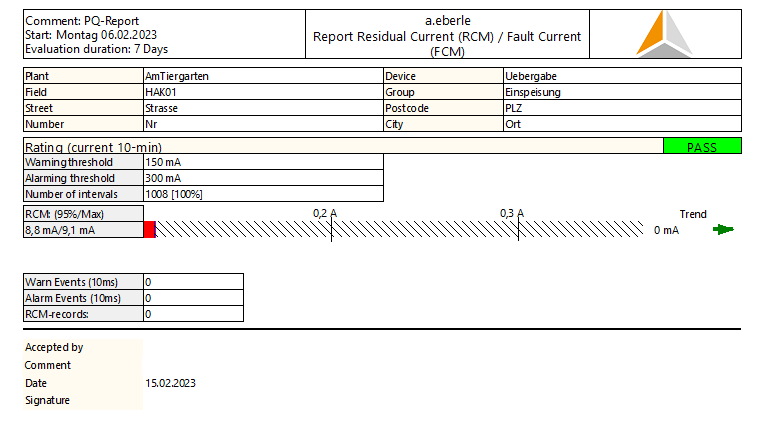
Use as a mobile residual current meter
Our PQ-Box family consists of high-performance, portable mains analysers, frequency analysers, power meters and residual current meters that focus on user-friendliness and practicality.
Thanks to flexible current input measurement technology, you can also use our mobile power quality analysers as residual current measuring devices for residual currents up to 20 KHz.
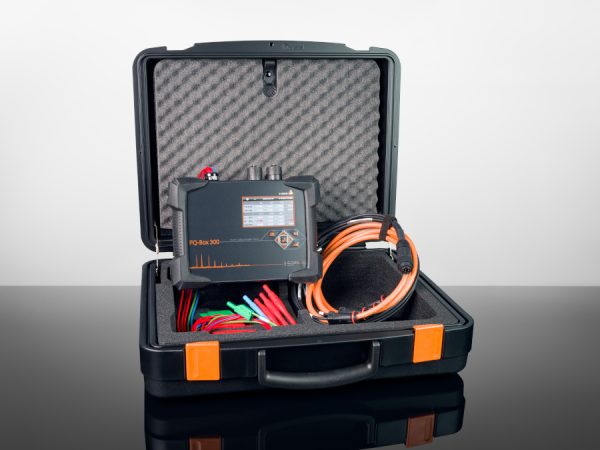
Here is a practical application example:

Residual current measurement with a mobile PQ-Box 300
In a photography and design studio, located in a large industrial park, a residual current device (RCD) tripped very frequently. Due to the permanent power outtages, this company could not work reasonably on many days per month. Read here how we were able to fix this problem.
Testing of electrical systems for fire protection according to DGUV V3
Status quo, disadvantage and our innovative solution
Status quo
Around 33 percent (IFS fire cause statistics 2022) of all registered fires are due to malfunctions or defects in electrical systems.
These limit the functionality of electrical systems and lead to production downtimes and lost sales.
The safety of the electrical systems is increased by initial inspections before commissioning as well as repeat inspections at regular intervals.
These safety tests are prescribed by the German Social Accident Insurance Institution in accordance with DGUV regulation 3 and include an insulation test of the circuits.
Permanently installed instead of periodic measurements
The testing of electrical systems according to DIN VDE 0105-100/A1:2017-06 (Para. 5.3.3.101.0.2) provides for the possibility of dispensing with the periodic insulation test with its challenges by means of a permanently installed measurement of the residual current by an RCM.
Disadvantage:
With the previous RCM measurement, the evaluation and interpretation of the measurement results even by experts is often very difficult due to the changed consumer groups in practice.
In some cases, the residual currents caused by RCM are many times higher than the specified values according to e.g. DIN VDE 0100-482 in conjunction with DIN VDE 0100-530 of 300mA (~69W at 230V).
Reason: The measured residual current depends on the number of consumers, the technology used on site and initially says little about the quality of the insulation condition!
Solution: A. Eberle responds to the challenges of residual current measurement with a new method for detecting the fault current: Fault Current Measurement (FCM).
Product Manager Fabian Leppich (PQSys) on the FCM (Fault Current Measurement) method vs. RCM (Residual Current Measurement)
The measured residual current depends on the number of loads and initially says little about the quality of the insulation condition; accordingly, a more sensitive method such as residual current measurement, which relates to the conductance values of the network, makes sense!
Residual current monitors (RCM) have been recognised by VdS as an alternative to insulation measurement for years. The questions that arise are:
To which residual current should the RCM be set? How high are the leakage currents?
How can leakage currents be distinguished from residual currents?
Please do not forget to switch on the subtitles!

